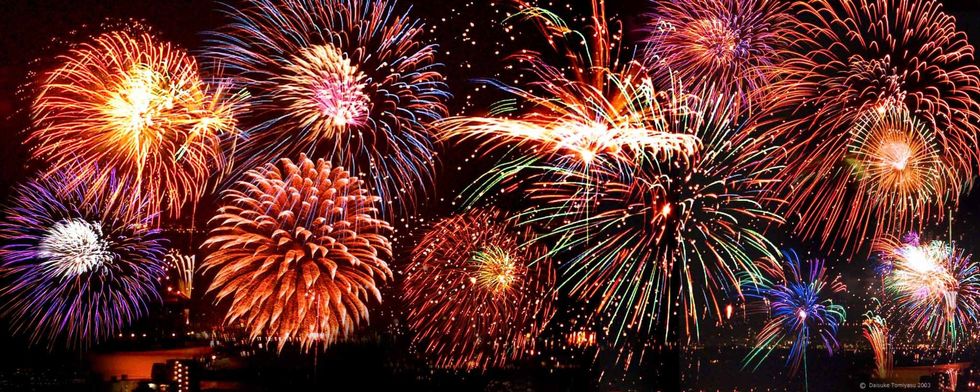On Independence Day the way to celebrate is with fireworks. They light up the sky with colorful explosions.
Experts believe that fireworks were invented in China well over 1,000 years ago. China is still the largest manufacturer of fireworks in the world. Most people are familiar with two basic types of fireworks: firecrackers and sparklers. The science behind these two basic fireworks form the basis for the big fireworks you see in the sky. These are called aerial fireworks.
Sparklers make a bright sparkly light for a longer time rather than a short explosion. Sparklers contain more substances than firecrackers. This means they'll burn longer and produce light and sparks. The bright sparks that are seen are usually burning bits of dust made of metals, such as aluminum (a silvery ductile metallic element found primarily in bauxite), iron, steel, zinc (a bluish-white lustrous metallic element; brittle at ordinary temperatures but malleable when heated; used in a wide variety of alloys and in galvanizing iron; it occurs naturally as zinc sulphide in zinc blend) or magnesium (a light silver-white ductile bivalent metallic element; in pure form it burns with brilliant white flame; occurs naturally only in combine such as in magnetite and dolomite and carnality and spinel and olivine)
Firecrackers are simple rolled paper tubes filled with lack powder (also called gunpowder) or flash paper and a fuse. When you light the fuse of a firecracker, the fire burns along the fuse until it reaches the powder. When it does, there is an explosion.
Aerial fireworks are usually manufactured as a shell that is made up of four parts. The container consists of pasted paper. The fuse allows the shell to reach the desired altitude before exploding. A bursting charge made of black powder (like a firecracker) is at the center of the shell. Stars (sparkler-like substances shaped into small spheres) are mixed throughout the interior of the shell.
These shells are usually launched into the sky from short pipes filled with a lifting charge of black powder. The lifting charge also lights the shell's fuse, which burns as the shell rises into the sky. When the flame along the fuse hits the bursting charge inside the shell, the shell explodes.
The explosion ignites the stars. The stars burn to produce the bright sparks of light we see in the sky. The explosion pushes the stars in all directions.
The specific pattern that fireworks make in the sky depends upon the way the stars are arranged in the shell. To create a special pattern, manufacturers create an outline of the pattern they want with stars and then surround those stars with a special charge that will separate them all at the same time from the shell.
Most colors are produced by carefully mixing the right kinds of chemical compounds that will make particular colors when they burn.
Red is strontium and lithium salts or carbonates.
Yellow is sodium compounds
Green is barium compounds
Blue is copper compounds
Here's the how it's made video on how fireworks are made:
information found on http://wonderopolis.org/wonder/how-are-fireworks-m...








 Photo by
Photo by  Photo by
Photo by  Photo by
Photo by 

















